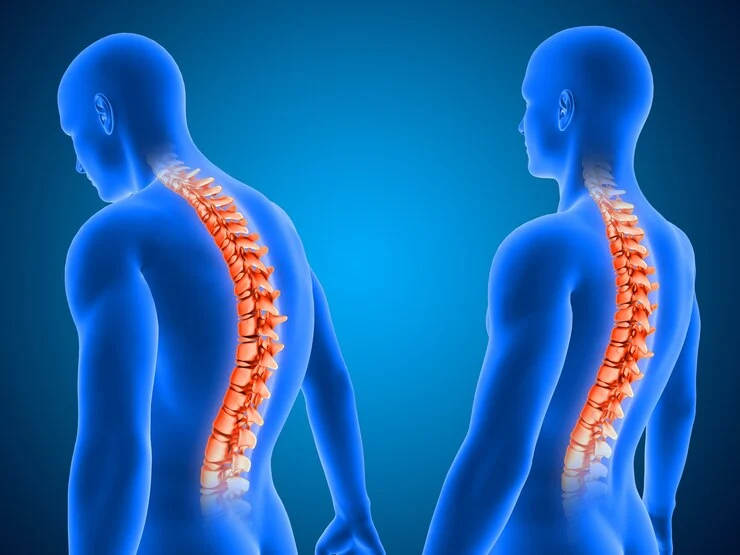How To Recover From A Broken Wrist
Category: Orthopedics
A broken wrist can be a painful and frustrating experience, but with the right care and rehabilitation, you can recover and return to your daily activities. The recovery process can vary depending on the severity of the fracture and the treatment provided, but following a structured rehabilitation plan is key to a full recovery. At Lokmanya Hospital in Pune, we specialize in orthopedic care and have a team of experienced doctors to guide you through every step of the healing process, ensuring the best possible outcome.
Understanding a Broken Wrist
A broken wrist occurs when one or more of the bones in the wrist are fractured due to a fall, accident, or injury. The wrist consists of eight small bones, and any of these bones can break or fracture. The most common wrist fracture involves the distal radius, which is located near the wrist joint.
Symptoms of a broken wrist include:
- Immediate pain and swelling at the site of the injury
- Deformity or abnormal positioning of the wrist
- Difficulty moving the wrist or hand
- Bruising or discoloration around the wrist
Treatment for a Broken Wrist
The treatment for a broken wrist depends on the type of fracture, its severity, and your overall health. Generally, there are two main approaches to treating a broken wrist: conservative (non-surgical) and surgical treatment.
Conservative Treatment
In many cases, a wrist fracture can be treated without surgery. This is typically true for fractures that are not displaced (i.e., the bone has not moved out of place). The common treatments include:
- Casting or Splinting: The most common method for treating a non-displaced wrist fracture is through the use of a cast or splint. This immobilizes the wrist, allowing the bone to heal in the correct position. The cast typically needs to be worn for 4-6 weeks, depending on the severity of the fracture.
- Pain Management: Over-the-counter pain relievers, such as ibuprofen or acetaminophen, can help manage pain and reduce inflammation. Your doctor may also recommend ice packs to control swelling.
- Follow-up Appointments: Regular follow-up visits to your doctor are essential to ensure the bone is healing properly. X-rays may be taken to monitor the healing process and check for any signs of complications, such as nonunion or malunion of the bone.
Surgical Treatment
In some cases, surgery may be necessary to properly align the bones and ensure a full recovery. Surgery is typically recommended for:
- Displaced fractures (when the bone has moved out of place)
- Comminuted fractures (when the bone is broken into multiple pieces)
- Fractures that do not heal properly with a cast
During surgery, the surgeon may use metal plates, screws, or pins to stabilize the broken bones. After surgery, the wrist may need to be immobilized with a cast or splint while it heals. Physical therapy is often necessary after surgery to restore strength and range of motion.
Rehabilitation and Recovery
Regardless of whether you have had conservative treatment or surgery, rehabilitation is a crucial part of the recovery process. After the wrist is healed, regaining strength, flexibility, and functionality is essential to return to normal activities. The recovery timeline can vary, but most people can expect the following:
- Physical Therapy: After the cast is removed or after surgery, physical therapy is essential to help restore range of motion and strength in the wrist. A therapist will guide you through exercises that improve wrist flexibility and strength while avoiding re-injury.
- Gradual Activity Return: It's essential to gradually return to normal activities, especially if you are an athlete or have an active job. Begin with low-impact activities and gradually increase the intensity. Avoid heavy lifting or high-impact exercises until your wrist is fully healed.
- Avoiding Re-Injury: During recovery, it’s important to protect the wrist from re-injury. Wearing a wrist brace or splint during high-risk activities can provide extra support and prevent further damage.
Common Challenges During Recovery
Recovering from a broken wrist can come with its challenges, including:
- Pain and Swelling: During the initial stages of recovery, it is common to experience pain and swelling. Managing these symptoms with prescribed medications and ice packs can help.
- Limited Mobility: It can take time for the wrist to regain full mobility after being immobilized in a cast. Consistent physical therapy is necessary to improve range of motion.
- Mental and Emotional Adjustment: The recovery process can be frustrating, especially if your wrist fracture limits your ability to perform daily activities. It's important to stay patient and stay focused on your rehabilitation goals.
Why Choose Lokmanya Hospital for Broken Wrist Treatment?
Lokmanya Hospital in Pune is renowned for its expert orthopedic care, offering personalized treatment plans for patients with broken wrists. Our team of orthopedic surgeons is highly skilled in both conservative and surgical treatments for wrist fractures, using advanced diagnostic tools and techniques to ensure the best possible outcome. Whether through non-invasive therapies or complex surgeries, we focus on providing comprehensive care that prioritizes your recovery and helps you return to a pain-free lifestyle.
Conclusion
Recovering from a broken wrist takes time and patience, but with the right treatment and rehabilitation, you can fully regain wrist function and return to your normal activities. Whether you require a cast or surgery, following your doctor's advice and engaging in physical therapy are key components of the recovery process. Lokmanya Hospital offers expert care for broken wrist treatment and recovery, ensuring the best possible outcomes for our patients.
FAQs
- How long does it take to recover from a broken wrist?
Recovery time varies depending on the severity of the fracture, but most fractures heal within 6-8 weeks. - Do I need surgery for a broken wrist?
Surgery is typically required for displaced or comminuted fractures, or when a non-displaced fracture does not heal with a cast. - Can I move my fingers if I have a broken wrist?
Yes, gentle finger movement is often encouraged to prevent stiffness and swelling. Your doctor will advise you on the best practices. - How soon can I return to work after a broken wrist?
The timeline for returning to work depends on the nature of your job and the severity of the fracture. Generally, you can return to desk work in 4-6 weeks but may need more time for physically demanding jobs. - Will I need physical therapy after my wrist heals?
Yes, physical therapy is essential to regain strength and mobility in the wrist after the cast is removed or after surgery. - Can a wrist fracture cause permanent damage?
With proper treatment and rehabilitation, most wrist fractures heal fully. However, untreated fractures or improper healing can lead to long-term complications, such as arthritis or limited mobility.
Previous blog

The Best Exercises For Spinal Health
Next blog






